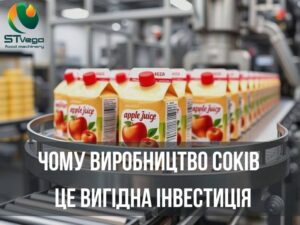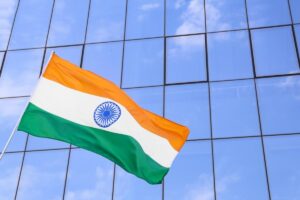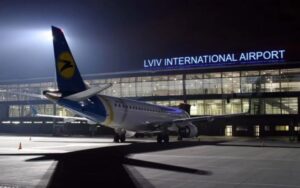
Passenger traffic across the Ukrainian border in the second week of spring, from March 8 to 14, decreased by a total of 3% in both directions to 427 thousand in comparison with the previous week.
According to the State Border Guard Service’s Facebook page, the number of exit crossings decreased from 222,000 to 216,000, while the number of entry crossings decreased from 218,000 to 211,000.
The number of vehicles crossing the checkpoints decreased from 117,000 to 115,000, while the flow of vehicles with humanitarian cargo decreased from 621,000 to 543,000.
According to the State Border Guard Service, as of 9:00 a.m. on Sunday, there were small queues of 10 cars at the Uzhhorod checkpoint on the border with Slovakia, at the Ustyluh checkpoint on the border with Poland, and at the Luzhanka and Vylok checkpoints on the border with Hungary.
In addition, at the Krakivets checkpoint, there is an accumulation of vehicles entering Ukraine, which may lead to an increase in waiting time, the border guards added.
The total number of people crossing the border this week in 2025 is slightly higher than last year: 209 thousand people left and 207 thousand entered Ukraine in the same seven days, with a traffic flow of 116 thousand. Last year, in the third week of spring, passenger traffic increased by 7.9%, and with the onset of spring school holidays next week, it increased by another 19.8%.
As reported, on May 10, 2022, the outflow of refugees from Ukraine, which began with the outbreak of war, was replaced by an influx that lasted until September 23, 2022 and amounted to 409 thousand people. However, since the end of September, possibly under the influence of news about mobilization in Russia and “pseudo-referendums” in the occupied territories, and then massive shelling of energy infrastructure, the number of people leaving has been exceeding the number of people entering. In total, from the end of September 2022 to the first anniversary of the full-scale war, it reached 223 thousand people.
In the second year of the full-scale war, the number of border crossings to leave Ukraine, according to the State Border Guard Service, exceeded the number of crossings to enter by 25 thousand, while in the third year – by 187 thousand, and since the beginning of the fourth year – by another 26 thousand.
As Deputy Economy Minister Serhiy Sobolev noted in early March 2023, the return of every 100,000 Ukrainians home results in a 0.5% increase in GDP.
In its January inflation report, the National Bank estimated the outflow from Ukraine in 2024 at 0.5 million (0.315 million according to the State Border Guard Service). In absolute terms, the number of migrants staying abroad will increase to 6.8 million in 2024.
The NBU also maintained its outflow forecast for 2025 at 0.2 million.
According to updated data from the UNHCR, the number of Ukrainian refugees in Europe as of February 19, 2025, was estimated at 6.346 million, and 6.907 million worldwide, which is 43 thousand more than as of January 16.
In Ukraine itself, according to the latest UN data, 3.665 million internally displaced persons (IDPs), including approximately 160 thousand people, were displaced from the frontline areas in the east and south between May and October 2024 due to the intensification of hostilities.

In February 2025, the Export Credit Agency (ECA) supported UAH 478.6 million of exports by insuring export loans for Ukrainian producers in the amount of UAH 61.3 million and a foreign trade agreement worth UAH 49.4 million.
According to the ECA website, seven exporters used its services, with Oschadbank providing UAH 51.3 million in financing (UAH 298.5 million of supported exports) and Kredobank providing UAH 10 million (UAH 130.65 million of exports).
This time, the leading regions were Zaporizhzhia (UAH 230.4 million of future export revenue), Ternopil (UAH 130.65 million), and Chernihiv (UAH 41.6 million).
These businesses produce and export paper and cardboard, plastics and polymeric materials, land transport vehicles, and various food products to France, Romania, Uzbekistan, India, and Estonia.
The Export Credit Agency was established to stimulate the export of goods (works, services) of Ukrainian origin and support Ukrainian resident exporters by providing insurance, reinsurance, and guarantees under contracts that ensure export development. On January 7, 2023, the National Bank of Ukraine was authorized to regulate the activities of the ECA.

Today, consumers around the world, and in Ukraine in particular, are increasingly choosing natural products that are associated with a healthy lifestyle. Juices, as one of the key segments of the beverage market, not only meet this trend, but also demonstrate a steady increase in demand. For businessmen looking for profitable areas for investment, juice production offers attractive prospects: a relatively low entry threshold, quick payback, and significant potential for scaling. In this article, we will analyze global and Ukrainian market trends, provide key figures and facts, and explain why it is worth paying attention to this industry right now.
Global juice market: figures and trends
The global juice market remains one of the most dynamic segments in the beverage industry. According to the analytical company Statista, in 2024, its volume reached about $18.5 billion, maintaining a stable annual growth rate of 5-7%. Forecasts for 2025 indicate a further increase in the market to $20 billion, driven by growing demand for natural products and innovative approaches to production.
Key global trends:
Large players such as Tropicana (PepsiCo), Minute Maid (Coca-Cola), and Innocent Drinks dominate the mass segment, while local brands with organic, cold-pressed, and functional juices are winning the premium market.
Ukrainian juice market: untapped potential
The Ukrainian juice market has unique features that make it attractive to investors. According to the Ukrainian Agribusiness Association, the average per capita consumption of juice is only 10 liters per year. For comparison, this figure reaches 30 liters in the EU and 50 liters in the US. This means that the Ukrainian market is far from being saturated and has a huge room for growth.
Key characteristics:
Market leaders:
Financial analysis of juice production: why is it profitable?
Juice production in Ukraine is not only a response to trends, but also an economically sound business. Here are the key arguments:
It is worth clarifying that the payback period of several months primarily refers to the workshop itself, not the business as a whole. This figure takes into account only the costs of equipment and raw materials at maximum line utilization. However, a full-fledged business includes additional costs: salaries for accountants, sales managers, logisticians, and warehouse workers, as well as rent, taxes, and marketing. If you already have well-established sales and supply channels, the payback period may be closer to these terms. However, in real-world conditions, where there are no ideal scenarios, you should focus on a more realistic timeframe of about 6-12 months. That’s how long it usually takes for juice production to start generating stable profits, depending on external factors and the efficiency of your business model.
These simple calculations demonstrate that launching juice production is not only an opportunity to occupy a profitable niche in the market, but also to ensure a quick return on investment. Investing in modern equipment allows you to reduce production costs and increase profit margins, which is especially important in a highly competitive environment.
Minimum set of equipment for juice production
To organize a full-fledged production process, it is necessary to equip the workshop with a line that includes a number of specialized machines and devices. Using the equipment listed below, you can achieve a capacity of up to 30,000 liters per month, which is ideal for medium-sized businesses with the prospect of scaling up:
– Industrial juicers
Designed for processing large volumes of raw materials, which makes them indispensable in large-scale production. Particularly noteworthy is the STvega J 1500 masticating juicer. Its high productivity and squeezing efficiency allow you to optimize the production process and ensure high quality of the final product.
The approximate cost of this line can be around $50-80 thousand, while it can generate $10-20 thousand in gross revenue per month after reaching a volume of 500-1000 liters of juice per day.
But you can start with much smaller investments. Some of the operations can be done manually with the help of human resources, and then you can use only the most necessary equipment, such as a juicer, filters, and pasteurizers. In this case, you can start with 5-10 thousand dollars and test your idea.
Where to buy juice production equipment?
When choosing a supplier of equipment, it is important to consider not only the quality of the equipment, but also the level of service support, warranty service, and technical support. STvega is one of the market leaders specializing in the sale of modern equipment for the food industry.
Why choose STvega:
– Wide range of products: We offer equipment from China, Europe and Ukraine, which allows you to choose the best solution for any business.
– Warranty and post-warranty service: The company’s specialists provide full support and technical assistance at all stages of operation.
– Competitive prices: High quality at affordable investment terms makes the purchase as profitable as possible.
– Individual approach: Consultations on the selection of equipment for your budget and needs.
By investing in a production line from STvega, you get not only modern equipment, but also a partner who will help you grow your business and quickly achieve your goals.
Conclusion.
Today, investors are looking for opportunities that combine stability and high income potential. One of the most promising ways is to invest in your own production – your business. This is not just a reliable investment, but also a chance to create something real: a product that will be in demand, generate profit and allow you to control every stage of development. This approach provides not only financial return, but also long-term value, because you are building a business that works for you and meets modern market trends.
If you want to know more or get advice on the selection of equipment, please contact our specialists. For example, our company STvega has good experience in supplying equipment for juice production. We will help you make an informed choice, calculate the cost and lay a solid foundation for a successful start of your business.
Juice production is a business with a clear model that fits perfectly into the current trends of healthy eating and support for local producers. The global market is showing steady growth, and Ukraine has all the conditions for rapid development: from cheap raw materials to export opportunities. By investing in this segment today, you can not only make a quick profit, but also gain a foothold in an industry that promises to remain relevant for decades. It’s time to act – the market is waiting for new players!

Indian Prime Minister Narendra Modi said that he remains a consistent supporter of peace, and “where we can act as peacemakers, we are happy to take on this responsibility.”
“Because India is the land of Gautam Buddha and Mahatma Gandhi. And Indians are not prone to enmity and conflict. Instead, we support harmony… We stand for peace. And wherever we can act as peacemakers, we are happy to take on that responsibility,” Modi said in an interview for Lex Friedman’s podcast, published on Sunday.
According to the prime minister, he has good relations with both Ukraine and Russia.
“I have close relations with both Russia and Ukraine. I can sit with President Putin and say that now is not the time for war. And I can also say to President Zelensky in a friendly way that, brother, no matter how many people stand with you in the world, there will never be a solution on the battlefield. The solution will come only when both Ukraine and Russia sit down at the negotiating table,” the Indian Prime Minister said.
“It was difficult to find peace at first, but the current situation provides an opportunity for meaningful and productive talks between Ukraine and Russia,” Modi emphasized.
According to him, the war has brought “a lot of suffering, even the Global South has suffered”. “The world is struggling with the crisis of food, fuel and fertilizers. So, the international community must unite in the pursuit of peace. As for me, I have always maintained that I am on the side of peace. I am not neutral. I have a position, and it is peace. And peace is what I am striving for,” Modi summarized.

Director General of the King Daniel Halytskyi International Airport “Lviv” (LWO) Tetyana Romanovska said that the airport may resume flights in late spring or early summer “under an optimistic scenario,” the Lviv edition of High Castle reports.
“We would like the opening of the airport to take place in the summer period, because we understand that the main air traffic falls on vacations, summer and when the day is long. If it happens as early as April or May, it will be very good for us,” Romanovskaya said in an interview.
She added that “five to seven” airlines are ready to work in Lviv, within a month after the launch of the terminal.
“Wizzair, Air Baltic, Turkish Airlines, Sky Up, Austrian Airlines, Lufthansa, LOT are ready to fly from Lviv. Now we are talking about restoring regular flights from Lviv. Sky Up airline is likely to try to return charter flights. They have a good network of routes in Europe”, – said the head of the airport.

In 2024 , the Latvian residential real estate market showed moderate growth and stability despite global economic challenges.
In Riga, apartment prices increased by 5-7% year-on-year, while in other major cities, such as Daugavpils and Liepaja, the growth was around 3-4%.
Most transactions with new apartments in the capital were concluded in the price range of EUR 100,000 to 150,000, indicating a steady demand for mid-market housing.
In 2024, there was an increased interest in suburban real estate due to the changing preferences of buyers seeking more spacious and environmentally friendly housing.
However, the segment of new buildings saw a one-third decline in sales, while sales in the secondary market and in prefabricated buildings increased.
The rise in mortgage interest rates due to the increase in the Euribor rate led to a decline in real estate activity. Many buyers have taken a wait-and-see attitude, waiting for lending conditions to stabilize.
Experts expect the real estate market to revive in 2025. Lower interest rates and stabilization of the economic situation may stimulate demand for housing. The market is expected to become more dynamic, and buyers will be willing to invest in green architecture and energy-efficient housing.
However, the issue of prices will remain relevant, and buyers will have to choose between more spacious housing outside the city or smaller apartments in the center. All in all, 2025 promises to be a favorable year for the Latvian real estate market, with the possibility of increased activity and price stabilization.
Source: http://relocation.com.ua/analiz-rynku-zhytlovoi-nerukhomosti-la/